How was radicalism created and why?
Muslim radicalism can be divided into two main main branches: theviolent radicalism, jihadist, whose main weapon is the attack, and radicalism »Systemic » which opposes the integration into the Republic of those who practice Muslim religion. The Muslim Brotherhood is attached to this second branch.
Much less visible to the public, it is nonetheless very effective, because it is based on ahistorical doctrine, a global strategy and powerful financial resources.
The Brotherhood was launched in 1928 to restore the Caliphate, a world religious government thatwas aimed at combating « unbelievers » (especially Christians, Hindus and Jews) and spread Islam. The organization opposed the very existence of secular states anywherewas within the Muslim societies of the Middle East.
The birth of the doctrine of the Islamic « Renaissance »,against Western secular hold
The “Frériste” doctrine is therefore born in opposition to the Western cultural and societal model. A glanceon the emblem of the movement, the Koran, and two crossed sabers, is interesting, it calls for combat, especially if we add the translation of the text which appears there: « Prepare yourself » …
It is articulated around the Islamic « Renaissance », against the secular grip Western and blind imitation of the European model.
The founder of « the secret society of the Muslim Brotherhood » in 1928, in Ismailia, in the northeast of Egypt is Hassan Al Banna, a very religious father and a youth very involved in conservative religious associations will lead him to this creation. He is deeply convinced that the only way to free his country from the British cultural imprint (Egypt was then under Britain’s mandate) is to develop a social Islam.
The Muslim Brotherhood assassinated Prime Minister Mahmud Fahmi Nuqrashi in 1948; theyplotted the assassination of President Gamal Abdel Nasser in the early 1950s. Branch of the Brotherhood, Al Jihad, led by Ayman al-Zawahiri, future No. 2 of Osama BenLaden, assassinated President Anwar Sadat in 1981 and attempted to assassinate President Hosni Mubarak in 1995.
Another Egyptian figure, Sayyid Qutb, is considered to be the driving force of the movement. Hepublished, among others, Milestones on the way to Islam, theorizing the movement’s approach.The coming to power of Mohamed Morsi, and the Muslim Brotherhood movement, following the fall of President Mubarak, was an important step for the brotherhood, even if it was shortduration (368 days).
This confrontation of the Muslim world with the Western world did not take place only in an “exogenous” framework, namely between the outside world and the Islamic world. This shock with the contemporary world has also taken place « endogenously » within the Muslim world itself. This confrontation did not take place in just one country but in two countries, representatives of the two main currents of the Muslim religion, Sunnism and Shiism, the Turkey and Iran.
In Turkey, after World War II, the one who would become Mustapha Kemal Atatürk undertook the construction of a modern Turkey within the framework of an officially secular. Huge first shock of a separation between state and religion, between law and religion Muslim, in a Muslim country. Female emancipation with the right to vote granted to women was voted in 1934.
Turkey is still feeling the vibrations of such a rapid, radical change, ideological and political. It is following this shock that the « counter-shock » of theTurkish political leadership, current, Islamic and conservative and, therefore, its proximity to the Brothers Muslims.
Iran, in a different institutional framework, will experience after World War II, and thirty years after Turkey, the same confrontation between a secular state and the religious. The Shah remove the obligation for ministers to make their commitment to the Koran. Such aseparation and rupture between state and religion, and other societal reforms, will create the breeding ground and the basis of the protest around Ayatollah Khomeini. The violent return of the religious in Iran can be explained in large part by this reform drive and the break between religion and the structure of the state.
The vision of the Muslim Brotherhood was therefore also fueled by internal tensions within the Muslim countries themselves.
The movement welcomed the coming to power in Iran of Iman Khomeini. This explains the current benevolent gaze of the Islamic Republic of Iran towards the Muslim Brotherhood and the Turkish power.
The Muslim Brotherhood remains extremely opposed to Western civilization andto a peaceful resolution of the Arab-Israeli conflict. Hamas is onebranching out.
His designs can be described as:
• Political freedoms: unlike democracies of theWestern countries that guarantee participation in political lifeof every citizen regardless of his ideology, his opinions and religion, the Muslim Brotherhood makes on this participation of individuals in social life on submission to the principles of the Islamic charî’a .
• Freedom of belief: the Muslim Brotherhood does not guarantee freedom of belief only to the followers of the three revealed religions (Abrahamic), or the “people of the Book”.
• Individual freedoms: while western democracies guarantee total freedom to individuals for as long that these do not infringe on the freedom of others, Muslim Brotherhood frame freedom of thought inmoral parameters of the charî’a . They advocate restoration of the hisba which authorizes any citizen to sueanyone who is guilty of an act considered by the complainant to be a violation of the charî’a even if the latter has not been personally wronged by a similar act.
• Women’s rights: in western-style democracies, women enjoy the same political rights as men; they can hold the same public office and participate in political life without any restrictions based on gender. With regard to the Muslim Brotherhood, women’s participation in political life would be limited to municipal elections; There is no way they are, for example, head of state. And in order to further accentuate this marginalization and exclusion from significant positions in public life, the Brothers call for the development of educational programs comprising documents appropriate especially for women and adapted to their nature / role as they perceive them. . In addition to these specific textbooks, they insist on complete segregation of the sexes in classrooms, on public transport and in the workplace. This is the portrayal of women as inferior beings as it was displayed in Kuwait, where the Islamists temporarily blocked the approval of a law guaranteeing political rights for women.
• The economy: the Muslim Brotherhood calls for the establishment of an economic system based on respect for private property; but at the same time they advocate respect for the principles of the charî‘a which makes banking interest a crime. They also advocate for the state’s nationalization of public services.
• The system of government: Unlike democracy, which is based on the peaceful alternation of power through elections, the Muslim Brotherhood calls for a system based on the principles of the charî‘a and the rebirth of the Islamic caliphate.
- Civil society: The freedom of movement that civil society organizations enjoy in a democracy would depend in an Islamic system on compliance with the principles of the charî‘a.
• Government: The Muslim Brotherhood is opposed to the notion of a state based on democratic institutions; instead they call for the formation of an Islamic government based on the Sūra (consultative assembly), the veneration of the leader and the investiture of a Supreme Leader; in this they are close to the Iranian system.
• Political freedoms: while the judiciary oversees the action of the state in such a way as to guarantee its conformity with the rules of democracy, it is in the minds of the Muslim Brotherhood to themselves that the oversight of the state action to ensure that it conforms to the rules of the charî’a.
• Israeli-Palestinian conflict: the Muslim Brotherhood was the first to send volunteers to fight the State of Israel when it was founded in 1948; they have never ceased to oppose attempts to resolve the conflict peacefully, in particular the peace agreements initiated by the late President Sadat; it is correct to say that the Muslim Brotherhood will never recognize the legitimacy of the State of Israel.
• Religious minorities: Although the Egyptian Muslim Brotherhood does not go as far as its counterparts in Saudi Arabia where the construction of places of worship for non-Muslims is prohibited, they exclude all non-Muslims from the presidency and advocate the subordination of non-Muslims. Muslims to the principles of the charî’a on which their entire system is based.
• All this does not prevent the brutal and often illegal treatment to which the Brotherhood is subjected remains legally unacceptable and counterproductive insofar as the postures are hardened on both sides. In fact, the only way to solve the problem with the Islamists is through dialogue, opening up channels of communication and a frank exchange of views. It is only through debate that we can transform a religious party into a civic political party, capable of subscribing to the essential principles of democracy: acceptance of the « other », alternation of power, respect for other religions and women. A similar transformation will be accomplished when political Islam abandons its distortion of our religion by presenting it as a doctrine rooted in the Middle Ages and which reflects the mentality of Bedouins who grew up in a relentless desert. Civil society has a right to protect itself from any group that remains locked in anachronism and would like to send us all back to the distant past.
• Just as reform in Egypt is a thousand times better than seizing power by any alternative, reforming Saudi Arabia would be a thousand times better than alternatives plunging the entire region into unprecedented chaos. Maintaining the stability of Saudi Arabia and all of its neighbors is imperative. But we cannot guarantee this stability without carrying out a historic operation against the extremists. The question is whether the sane elements of Saudi Arabia will follow a path similar to that taken by their famous ancestors 80 years ago (when they got rid of the Wahhabi warriors) or whether they will continue coexistence. until the boat sank with all the passengers.
Creation of the armed branch and participation in the 1948 war againstIsrael
In 1935, the organization contacted Amin al-Husseini, the grand muftiof Jerusalem, and takes part in the Arab uprising in Palestine of 1936. In 1945, Said Ramadan creates an Arab Palestinian armed wing of the movement, whichaims to fight the Zionist movement. The Muslim Brotherhoodare successful and many militants take part in the war 1948 Arab-Israeli.
The 1948 Arab-Israeli War, also known as the 1948 War, the War of Palestine of 1948, War of Independence or War of Liberation et al-Nakba (name given by the Arab Palestinians for this period: « the Catastrophe ”), is the war that led to the founding of the State of Israel and the birth of the Palestinian refugee problem. It also marks the start of the exodus of Jewish communities from the Arab world.
The 1948 war was fought in two phases:
• From November 30, 1947 to May 14, 1948, Palestine still under mandate British experience a period of civil war, marked by the confrontation between on the one hand Jewish armed organizations and the other, Arab Palestinians, supported by volunteers from Arab countries.
• From May 15, 1948, date of the end of the British Mandate and the founding of the State of Israel, begins the first Arab-Israeli war with, following the debacle of the Palestinian Arabs, the intervention military of Arab countries against Israel and the dispatch of expeditionary corps Egyptian, Syrian, Iraqi and Trans-Jordanian in the former territory of Palestine. Various armistices are signed between February and June 1949.
Many live this anachronistic approach to religion in a semi-passive way, turning in on themselves to protect themselves from the world around them, radically demanding respect for their prohibitions. But it is also this hatred of the modern world and of the West which can lead some of them to want to take action and to rally to terrorist movements, or to « invest themselves » in a terrorist mission on the model proposed by Daesh.
To achieve this, the Muslim Brotherhood is convinced that it is necessary to awaken Arab and Muslim consciousness, that people must be made proud of their Arab and Muslim identity, and that they claim it by opposing the way of life » à l’Européenne « which is a continuation of colonialism. In this very political process, the role of associations has always been essential. With young people, families in distress, educational, charitable, cultural sports activities … The objective being to educate in a new way of being.
As a consequence, the Muslim Brotherhood aims to come to power to change society. This current spread in the Arab countries; Ennahdha in Tunisia, The PJD in Morocco (which runs the government), in Egypt of course, or in the Gaza Strip with Hamas. The Muslim Brotherhood operates like a « Sunni international » with sometimes opposition, but also with a lot of funding from the « big brothers » of the Gulf countries.
The creation of a nebula of financial and influence duringthe 1980s and 1990s in Europe
The 1980s and 1990s also saw a deployment of activity within the movement European Union of the Muslim Brotherhood, which created several organizations (UOIE, UOIF, CEFR, etc.) aimed atto place growing Muslim communities under their influence, and strive to berecognized by governments as the official representative of these communities.
The Muslim Brotherhood is setting up its own financial institutions (Al-Taqwa Bank, Fonds European), direct support from Saudi institutions such as the Islamic World League (LIM) having become random. Indeed, after the movement’s support for the invasion of Kuwait by Saddam Hussein, Saudi Arabia distances it self from him, thus leaving its role of protector to the Qatar, whose Sheikh Hamad bin Khalifa Al Thani is convinced that the Islamo-conservatism of Brothers corresponds to the deep aspirations of the Arab peoples.
The world wide expansion of the Muslim Brotherhood owed much to the support of Qatar. This state becomes their world bank and the first Arab international television channel, Al Jazeera also located in Qatar, plays a decisive role in dissemination.
In 2007, recognizing their weight in the Middle East, the United States government took an interest innew to an alliance with the Brothers. The United States Department of State approves apolicy of future contacts between American diplomats and leaders of the movement in the Arab countries.
When the Arab Spring breaks out, al-Jezira becomes the sounding board for the revolution under thetutelage of the Brothers in Egypt, Libya, Syria, Bahrain and then Yemen. But, diets Arabs understand the danger that this protest movement represents for them. Theyturn against the television channel and begin to distance themselves from Qatar. It front ofthreats, Arab governments everywhere repress transnational organization « often withgreat brutality ”.
The United Arab Emirates and Egypt declare the Brotherhood terrorist organization. The organization Tunisian woman, who also fears being banned, is forced to sign a constitutional pact, renouncing Sharia law, women’s inequality and accepting freedom of conscience.
After the Egyptian authorities imprisoned the world leadership of the Brothers in July 2013, the organization comes under the tutelage of Turkey and Qatar.
This seizure of these two countries on the transnational Islamic organization was not withoutarouse growing hostility from the Arab states. This hostility manifests it self in particular duringthe embargo imposed on Qatar in 2017.
The Brothers intensify their control over Turkey, especially in the months following the coup State of 2016. Blocked in the Arab world, the Muslim Brotherhood redeployed to Europewith the support of the Turkish government.
An expanded system
The organization of the movement is largely international. This should help define axes complementary to oppose its action.
First of all, its European presence should encourage us to integrate our partners in Europe into acommon reflection. Then, in the short term, actions or devices, if they are notidentical, could be set up in a coordinated manner.
The fall of religious power in Iran will be felt throughout the Muslim world, and especiallyin the most conservative movements. A rejection in a country of 81 million in habitants will haverepercussions throughout Muslim society. It is the same in Turkey.
Finally, if the role of Qatari structures appears important in supporting the « movementfrériste ”, other state actors, from the Gulf region, work in a direction diametrically opposite. The United Arab Emirates has shown, and for years, a constant commitment against Iran and radical Islamic movements.
Let us also know how to exchange with partners who are themselves geographically and politically at thein the middle of the fight.

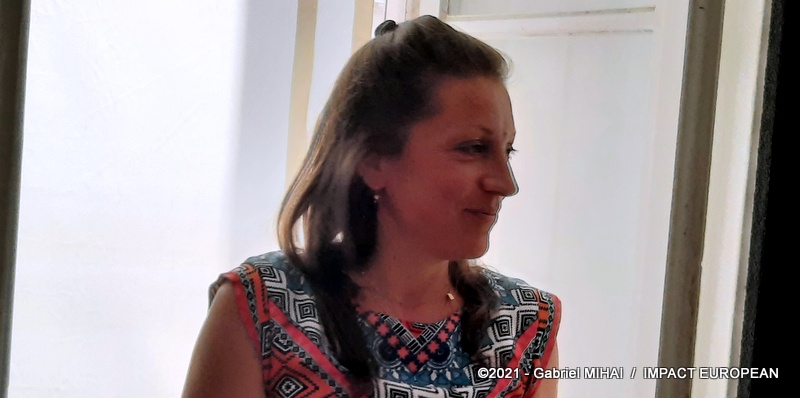
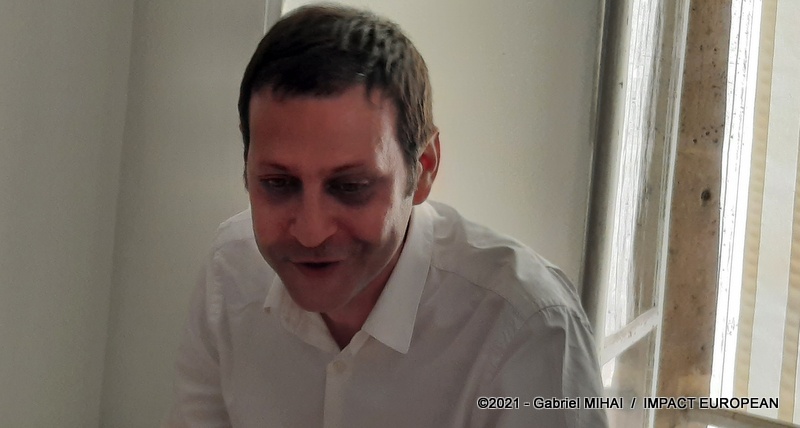
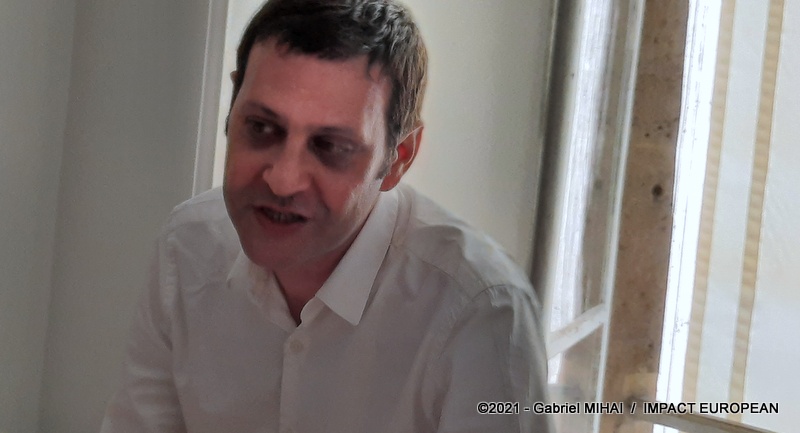
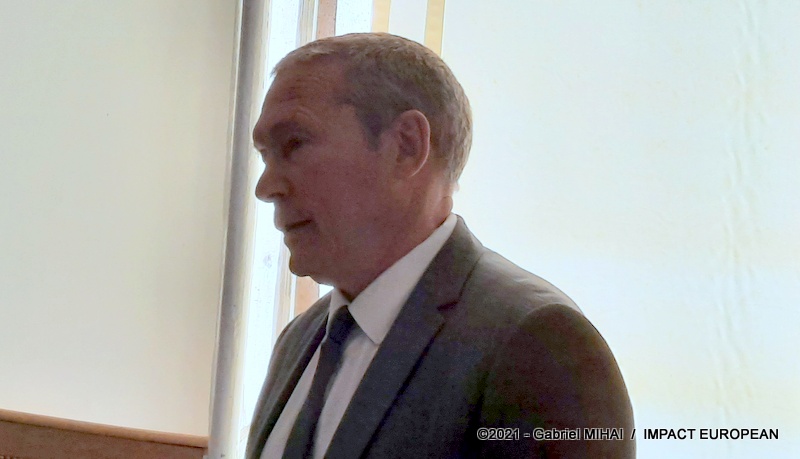


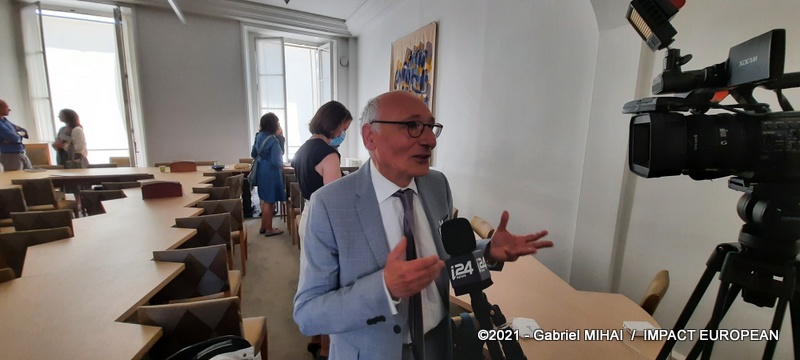
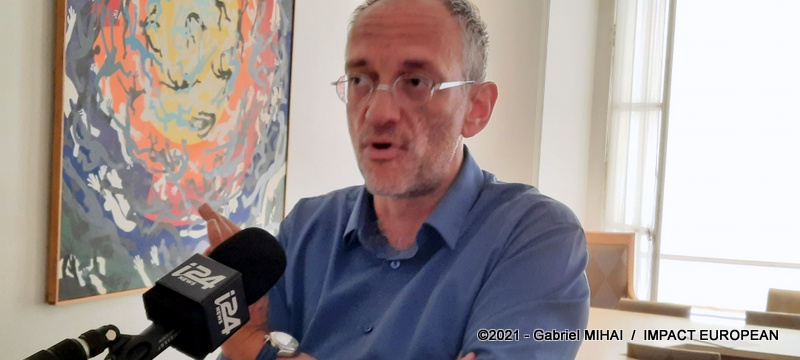
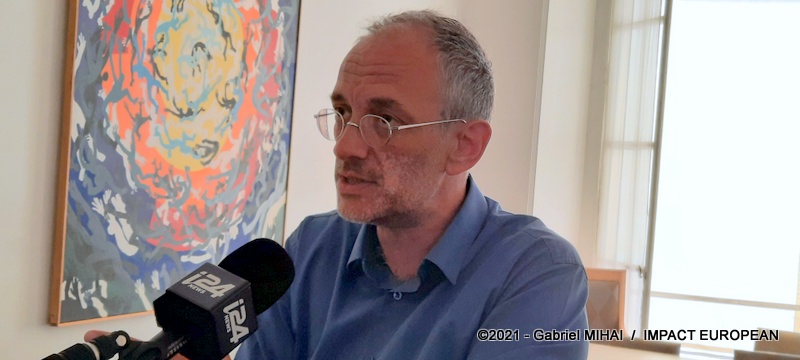
More Stories
Jenny d’Ormond, the mastery of 3D painting
Élysée: tripartite meeting between Trump, Zelensky and Macron
GREEN SANTA CLAUS ARE BACK